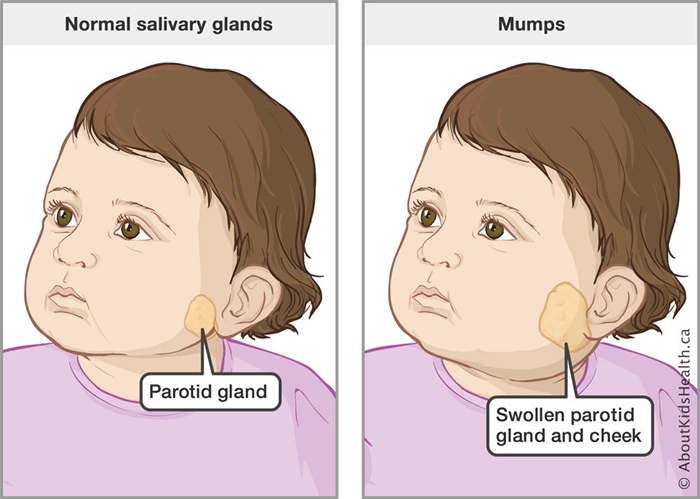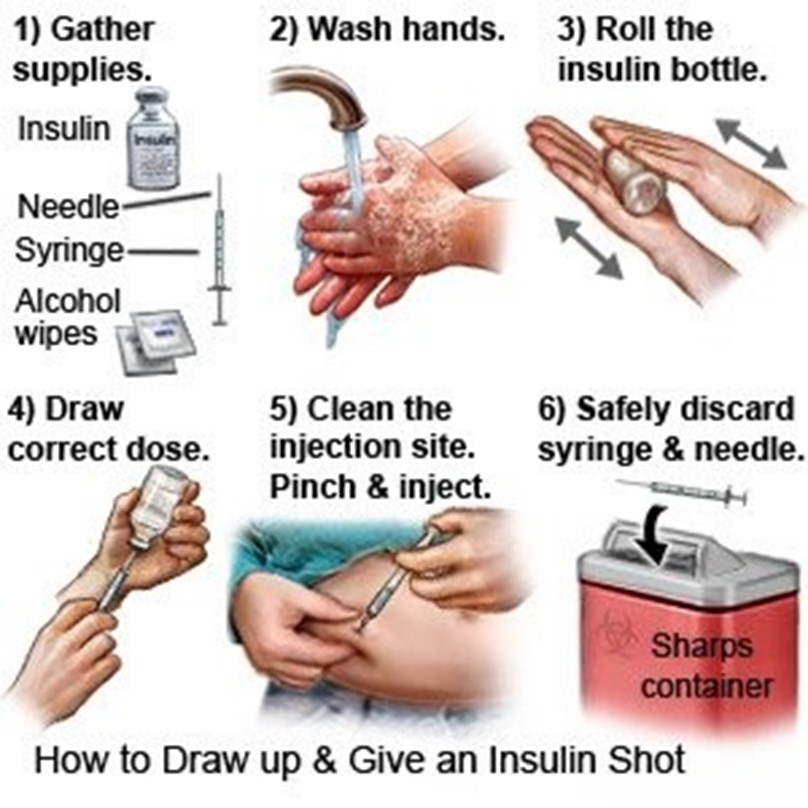A nurse is planning care for a child who has mumps. Which of the following instructions should the nurse include in the plan?
Initiate contact precautions.
Initiate standard precautions.
Initiate airborne precautions.
Initiate droplet precautions.
The Correct Answer is D
Choice A: Contact precautions are not necessary for a child who has mumps, as mumps is not transmitted by direct or indirect contact with the infected person or their environment. Contact precautions are used for infections that are spread by contact with skin, wounds, body fluids, or contaminated surfaces.
Choice B: Standard precautions are always used for any patient care, regardless of their diagnosis or infection status. Standard precautions include hand hygiene, use of personal protective equipment (PPE), safe injection practices, and proper disposal of waste and sharps. However, standard precautions alone are not sufficient for a child who has mumps, as mumps are transmitted by respiratory droplets.
Choice C: Airborne precautions are not necessary for a child who has mumps, as mumps are not transmitted by small particles that remain suspended in the air and can be inhaled by others. Airborne precautions are used for infections that are spread by airborne transmission, such as tuberculosis, measles, or chickenpox.
Choice D: Droplet precautions are required for a child who has mumps, as mumps are transmitted by large respiratory droplets that are expelled when the infected person coughs, sneezes, or talks. Droplet precautions include wearing a surgical mask when within 3 feet of the patient, placing the patient in a private room or cohorts with other patients with the same infection, and limiting visitors and staff who are susceptible to the infection.

Nursing Test Bank
Naxlex Comprehensive Predictor Exams
Related Questions
Correct Answer is A
Explanation
Choice A: A 10-year-old child who has sickle cell anemia and reports severe chest pain should be assessed first, as this is a sign of acute chest syndrome, which is a life-threatening complication of sickle cell disease. Acute chest syndrome occurs when sickle-shaped red blood cells block the blood flow to the lungs, causing hypoxia, inflammation, and infection. Acute chest syndrome can lead to respiratory failure, pulmonary hypertension, or stroke.
Choice B: A 7-year-old child who has diabetes insipidus and a urine specific gravity of 1.016 should be assessed second, as this is a sign of dehydration, which is a common complication of diabetes insipidus. Diabetes insipidus is a condition in which the body does not produce enough antidiuretic hormone (ADH) or does not respond to it properly, resulting in excessive urination and thirst. Dehydration can cause electrolyte imbalance, hypotension, or shock.
Choice C: A 4-year-old child who has asthma and an O2 sat of 97% should be assessed third, as this is a sign of adequate oxygenation, which is a desired outcome of asthma management. Asthma is a condition in which the airways become inflamed, narrow, and produce excess mucus, causing difficulty breathing, wheezing, coughing, or chest tightness. Asthma can be triggered by allergens, irritants, exercise, or infections.
Choice D: A 1-year-old toddler who has roseola and a temperature of 39°C/102.2°F should be assessed last, as this is a sign of a mild viral infection, which is self-limiting and usually resolves within a week. Roseola is a common childhood illness that causes a high fever followed by a pink rash on the trunk, face, and limbs. Roseola can also cause irritability, swollen lymph nodes, or mild diarrhea.
Correct Answer is C
Explanation
Choice A: This statement does not indicate a need for further teaching, as it is correct that insulin can be injected anywhere there is adipose tissue. Adipose tissue is the layer of fat under the skin that can absorb insulin and prevent damage to muscles or organs. The common sites for insulin injection are the abdomen, thighs, buttocks, or upper arms.
Choice B: This statement does not indicate a need for further teaching, as it is correct that the child should rotate sites after 5 injections in one area. Rotating sites can prevent lipodystrophy, which is a condition that causes abnormal changes in fat tissue due to repeated injections. Lipodystrophy can affect the appearance and absorption of insulin in the affected area.
Choice C: This statement indicates a need for further teaching, as it is incorrect that the child should aspirate before injecting the insulin. Aspiration is the process of pulling back on the plunger of the syringe to check for blood before injecting the medication. Aspiration is not recommended for insulin injection, as it can cause pain, bruising, or leakage of insulin from the injection site.
Choice D: This statement does not indicate a need for further teaching, as it is correct that insulin should be injected at a 90-degree angle. Injecting insulin at a 90-degree angle can ensure that the medication reaches the adipose tissue and prevents skin irritation or muscle damage. The only exception is if the child has very thin skin or uses very short needles, in which case they may inject at a 45-degree angle.

Whether you are a student looking to ace your exams or a practicing nurse seeking to enhance your expertise , our nursing education contents will empower you with the confidence and competence to make a difference in the lives of patients and become a respected leader in the healthcare field.
Visit Naxlex, invest in your future and unlock endless possibilities with our unparalleled nursing education contents today
Report Wrong Answer on the Current Question
Do you disagree with the answer? If yes, what is your expected answer? Explain.
Kindly be descriptive with the issue you are facing.
